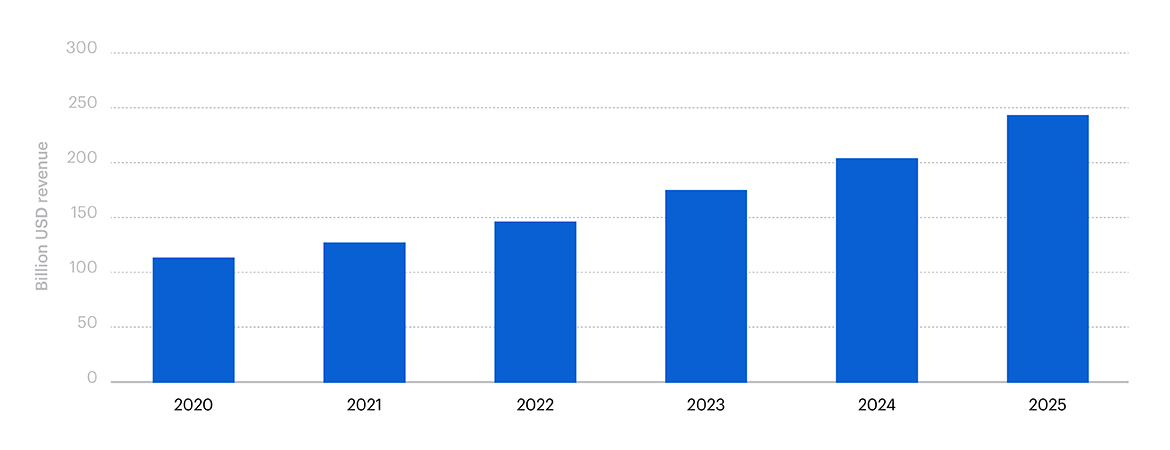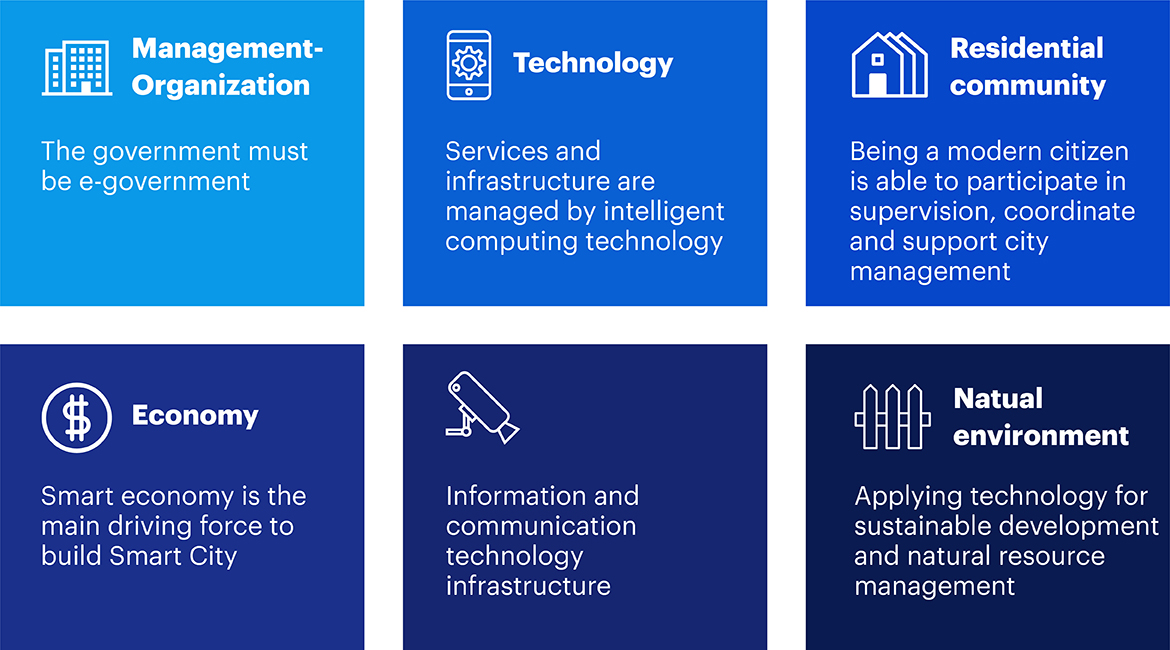Skyscrapers, high-rise commercial and residential buildings, and other types of immovable properties are becoming more prevalent in the present real estate market. While society is developing, and living standards are improving, people’s needs are evolving and no longer just for a place to work or stay as in the past. They need more convenient and smarter spaces, causing the development of smart cities and smart buildings to be one of the future market trends.
What is a Smart City?
Currently, the definition of a smart city has not been agreed upon, however, can be interpreted as a model of a city that applies information technology to manage and improve urban living standards, improve the service quality of the city government, and effective use of energy and natural resources. In a nutshell, a smart city is a city model that applies the latest technology to improve the city’s quality in all aspects.
According to Statista’s forecast statistics, the worldwide smart city market is expected to rise from $116.35 billion in 2020 to $241.02 billion in 2025. The value of public technology investments in smart cities is expected to reach 189.5 billion dollars by 2023 (1).
-

Figure 1: Global smart city market in 2020-2025 (1).
Some of the main influencing factors forming a smart city are organizational management, technology, residential community, economy, technology infrastructure, and natural environment.
-

Figure 2: The components that form a smart city framework.
Technology is one of the variables mentioned above that has significant impacts on the rest.
Smart buildings are a must-have in any smart city. So, what exactly is a smart building? It is simply defined as a combination of infrastructure and technology that allows systems to communicate and share information to improve the overall performance of the building while also conserving resources. These aids create the safest and most comfortable atmosphere, enabling everyone to live and work in that building.
How are smart buildings operated?
Sensors, controlling and monitoring systems, and other devices are used in smart buildings and connected to the control center as well as to each other to perform actions and procedures. Users can share the information they have gathered to automate functions such as lighting, air conditioning, heating, and security, to save time, energy, and other expenses in the building’s operations.
-

Figure 3: Smart building illustration
By connecting high-tech devices, including surveillance camera systems in smart buildings, smart cities provide simple images and videos and analytical data based on artificial intelligence (AI) technology. It can support the analysis of operational indicators to ensure safety and security for buildings and cities and give warnings and notifications if abnormalities arise where there is a need for repair or maintenance.
A unique feature is that smart building management software can share and integrate data between buildings. This helps buildings raise the value of their advantages while also creating a balanced unity for the ecology between buildings, contributing to smart cities’ development.
Applying technology to the operation of smart buildings
Technology is an inevitable trend and determines the long-term development of the real estate industry in the world and Vietnam. IoT sensors, building management software systems, AI, augmented reality, and robotics are some of the mechanisms and technologies used in buildings to transform them into smart ones.
The Internet of Things (IoT) is evolving and can allow us to access data via sensors or live monitoring devices. The data can be recorded and saved on the cloud platform, and managers can access it from anywhere at any time, enabling the most effective management. The building management board can be more proactive in handling operation, maintenance, in predicting and resolving possible problems. Furthermore, these data may be accessed and monitored by all residents living and working in the building, according to their demands. For example, real-time data on energy consumption allows them to adjust their usage accordingly.
The application of AI combined with the intelligent arrangement of sensors and control devices can continuously monitor and automatically adjust the parameters of temperature, humidity, air, and lighting quality, ensuring an optimal working environment and increasing the comfort of the occupants of the building. The temperature sensors can properly control the temperature in each area based on the user’s specific requirements. As a small example of the ability to save energy, light sensors can automatically turn on or off the light system, according to the pre-set time, the brightness level of the environment, or when someone is detected passing through that area. According to a study, smart buildings can save up to 30% of investment costs and 70% of monthly operating expenses compared with traditional buildings.

The application of technology in smart buildings and cities can generate information connectivity for residents and customers in those areas. Compared with the traditional management method where the building management board has to go to each household or post an announcement in a physical public area when it needs to announce a particular problem to the residents, the building management software is one of the solutions that help connect residents with building management easily and quickly. Building management systems can simply integrate more utilities in buildings and urban areas such as pre-booking of available utility services, quick online payment for used services, or checking information on activity and payment history.
Startups in the real estate market had attracted 10 billion dollars in 2016 and 44 billion dollars in 2019 (2). These companies primarily provide technology solutions for buildings, ranging from infrastructure construction to technical innovation, to provide the most efficient management designs, reduce building emissions, provide the best experience for tenants/buyers, and maximize financial benefits for investors.
Faced with the world’s rising urbanization, the United Nations projects that by 2022, nearly 56 percent of the world’s population would become urban dwellers. This proportion will increase by 2050 to 68 percent (3). As a result, high-rise buildings can play a vital role in resolving housing and workplace issues in cities where the population grows rapidly, but the land supply remains stable. Customers’ choices of houses and workplaces are becoming more diverse due to the robust growth of enterprises and real estate investors. As a result, a smart building or city will have significant competitive advantages in this future market.
Reference sources
(1) Statista. 2021 Smart Cities
(2) Ministry of Construction. 2021 Smart technology application in commercial building management
(3) Traffic newspaper. 2021 Hanwha Techwin Security promoting urban safety and security solutions





